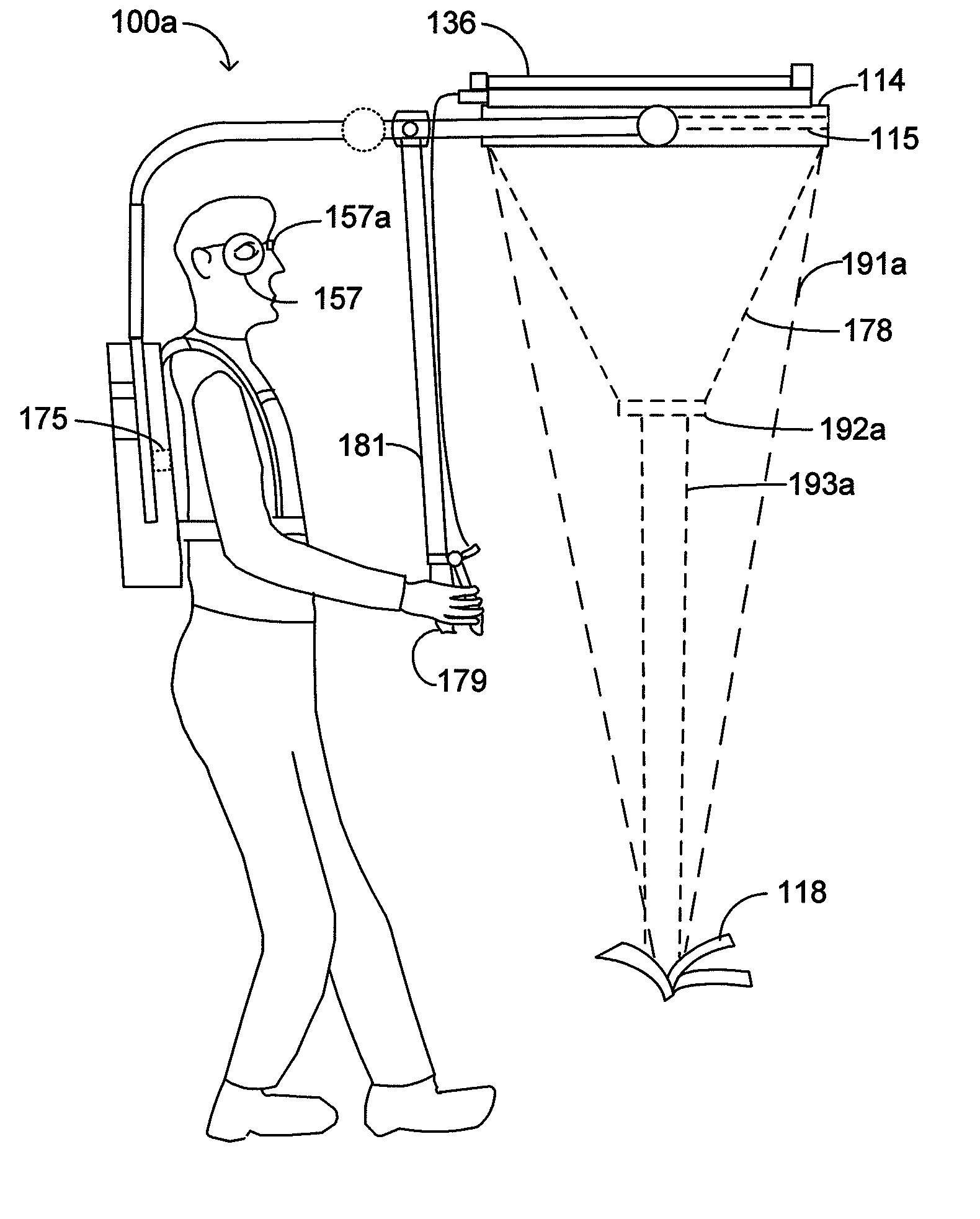Uncontrolled weeds in crop fields may use nutrients and water needed by crop plants, may shade or
choke crop plants, may contaminate crop products with noxious or otherwise undesirable weed seed or other parts of weed plants, and may damage harvesting equipment.
Weeds in residential lawns and in recreational and commercial areas such as parks, golf courses, and playgrounds are generally unsightly and detract from appearance in addition to interfering with desired plants and activities.
Some weeds in pastures may be toxic to
livestock or create other undesirable problems, such as
cockleburs or briars.
Some weeds also release chemicals into soil that interfere with
germination or growth of desired seeds.
Mechanical cultivation, whether by
machine or by hand tools, frequently results in damage to desired plants directly or through disturbance of soil and roots therein.
Manual cultivation via hoe or other hand tools is generally difficult and uncomfortable labor and frequently subjects field laborers to back, muscular, and other pain both during and after performing such work.
Manual and other mechanical cultivation also increases loss of valuable
topsoil through rain and wind
erosion.
Heating of weeds using conventional
combustion techniques generally involves use of increasingly expensive carbon-based fuels and also contributes to release of
carbon dioxide to the
atmosphere with potential implications for
global warming or other climate changes.
Direct heating via open
flame is also difficult to control and may thus result in damage to or stunting of desired plants, particularly in large scale applications.
Chemical herbicides may also cause damage to desired plants via over-spray or
wind drift, and herbicide contaminated
rainfall runoff from treated fields and lawns may also cause undesirable effects on downstream
flora and
fauna, particularly on aquatic or
amphibian animals, as well as rural or municipal water supplies.
However, some environmentalists and others fear that development of crops genetically modified to
resist selected herbicides will generally lead to increased use of the selected herbicides that may now be sprayed over an entire
crop field rather than being applied in a more controlled fashion.
Some researchers and lay persons have suggested potential use of concentrated solar energy for damaging weeds, but have not described the controls, safety measures, and other features needed to provide practical, safe, and convenient use of solar energy for
weed control.
The use of such tractors introduces additional costs over the instant invention presented herein due to the requirements for operators and conventional fuel.
Furthermore, the
slow speed which will generally be needed to provide sufficient
exposure of weed plants may not be efficient use of
tractor equipment designed to pull significant loads at moderate speeds.
Additionally, the
heavy weight of conventional tractors may also preclude use of such equipment in wet fields at the revisit intervals needed for effective control of emerging weed plants.
Typically, weeds emerge rapidly following significant rainfall which may also render fields inaccessible to conventional equipment during the period of most rapid weed emergence.
Thus, when using conventional tractors, access for
weed control may be limited at the time when the need for
exposure and control of emerging weed seedlings with concentrated solar energy is greatest.
On a different front,
instability in price and availability of foreign oil places additional strains and uncertainties on farmers and park and
lawn maintenance personnel relative to fuel resources needed to apply herbicides via
tractor spray rigs or via conventional aerial application of herbicides (e.g., using “crop duster” aircraft).
However, these devices are expensive to buy and costly to maintain due partly to collection of spray mist, and dust created by
tractor movement, on optical lens and other components of such devices.
Furthermore, these devices still use herbicides and may require dedicated use of fuel resources for tractors when
weed control is needed independent of other
crop production activities.
Furthermore, some fields may be inaccessible for extended periods due to rain causing tractors and other equipment carrying heavy chemical and fuel loads to sink into wet, muddy areas in a field, lose traction, or accumulate sticky mud (“gumbo”) on conventional tires or treads of tractors and other equipment.
In addition, some field areas may be inaccessible to conventional tractors or other heavy ground equipment once
irrigation pipes have been installed.
Runoff and
permeation of chemicals from such treatments contribute to the chemical
contamination of surface and subterranean water supplies.
For example, some vines have been found to be particularly susceptible to damage to their leaves by using solar energy concentrated, typically in a broader spot (as from a circular lens) or line (as from a
cylindrical lens), only to an intensity that provides rapid heating of leaves to temperatures in a range from around 150 degrees Fahrenheit up to a few hundred degrees, thereby causing significant damage and breakdown to cells and
photosynthesis and
nutrient transport structures within the leaves.
For example, weeds such as dandelions and others that tend to put out a number of low-laying leaves from a central crown may be more susceptible to more highly concentrated solar energy focused on the central area of the
plant where leaf stems joint the root, so that significant localized heating damage to the central area of the
plant effectively decouples the leaves from the root, preventing transport of water and
soil nutrients to the leaves and transport of critical photosynthate compounds from the leaves to the roots, typically resulting in loss of the leaves and loss of critical nutrients to the root structure.
Although the temperature at which cellular damage occurs may still be in a range from approximately 150 degrees to 300 degrees Fahrenheit, the thicker structures of the stems where they join the roots will typically require a higher temperature or extended
exposure durations on the exposed sides of the structure so that temperatures of shielded portions of the structure are also sufficiently elevated either via heat conduction or via removal of intervening
plant tissue so that essentially all of the stem area is sufficiently damaged to severely impair or prevent its normal
nutrient and
water transport functions.
Early damage to emerging leaves also prevents generation and transport of photosynthate nutrients back to the roots, which will generally be fatal to weed plants newly emerging from seeds, and which will generally at least stunt or impair grown of weeds that propagate via root extension.
As noted, conventional approaches for pest weed control suffer from risks of
resistance development to herbicides in some weed species for which control is desired as well as reduced
consumer acceptance of use of agricultural chemicals (e.g., witness increasing market for “organic” and “natural” products produced without chemical pesticides or
genetically modified crops).
 Login to View More
Login to View More  Login to View More
Login to View More 


